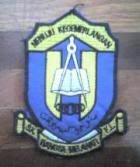The February 2011 Christchurch earthquake was a magnitude 6.3 (ML) earthquake that struck the Canterbury region in New Zealand's South Island at 12:51 pm on Tuesday, 22 February 2011 local time (23:51 21 February UTC). The earthquake was centred 2 kilometres (1.2 mi) west of the town of Lyttelton, and 10 kilometres (6 mi) south-east of the centre of Christchurch, New Zealand's second-most populous city. It followed nearly six months after the magnitude 7.1 4 September 2010 Canterbury earthquake, which caused significant damage to Christchurch and the central Canterbury region, but no direct fatalities.
The earthquake caused widespread damage across Christchurch,
especially in the central city and eastern suburbs, with damage
exacerbated by buildings and infrastructure already being weakened by
the 4 September 2010 earthquake and its aftershocks. Significant liquefaction
affected the eastern suburbs, producing around 400,000 tonnes of silt.
The earthquake was reported to be felt across the South Island and the
lower and central North Island.
In total, 181 people were killed in the earthquake, making the earthquake the second-deadliest natural disaster recorded in New Zealand (after the 1931 Hawke's Bay earthquake), and fourth-deadliest disaster of any kind recorded in New Zealand, with nationals from more than 20 countries among the victims. Over half of the deaths occurred in the six-storey Canterbury Television (CTV) Building, which collapsed and caught fire in the quake. The government declared a state of national emergency, which stayed in force until 30 April 2011.
It has been estimated that the total cost of rebuilding to insurers to be around NZ$20–30 billion, making it by far New Zealand's costliest natural disaster, and the third-costliest earthquake (nominally) worldwide. The earthquake would ultimately be one of three major earthquakes in a
year-long earthquake swarm affecting the Christchurch area, and was
followed by a large aftershock on 13 June (which caused considerable additional damage) and a series of large shocks on 23 December 2011.
[http://en.wikipedia.org/wiki/2011_Christchurch_earthquake]
 |
| A landslip crushes buildings in Sumner, Christchurch. Photo by Hannah Johnston/Getty Images |
 |
| Badly damaged buildings surrounded by rubble. Photo by Marty Melville/AFP |
 |
| A destroyed building in Christchurch. Photo by Don Scott/The Press. |
[http://www.brisbanetimes.com.au/christchurch-earthquake/]
The June 2011 Christchurch earthquake was a shallow magnitude 6.3 ML earthquake that occurred on 13 June 2011 at 14:20 NZST (02:20 UTC). It was centred at a depth of 6.0 km (4 mi), about 13 km (8 mi) from Christchurch, which had previously been devastated by the February 2011 magnitude 6.3 ML earthquake. The June quake was preceded by a magnitude 5.6 ML tremor that struck the region at a slightly deeper 10 km (6.2 mi). It was separately reported by the USGS as a magnitude 6.0 Mw event, focused at about 9 km (5.6 mi) below the surface.
Subsequent severe shaking in the city registered at VIII on the Mercalli scale,
destroying some buildings and causing additional damage to many
structures affected by previous earthquakes. The damaged tower of the
historic Lyttelton Timeball Station
collapsed before dismantling work could be completed. The earthquake
also downed phone lines and triggered widespread power outages, leaving
around 54,000 households without power. Rebuilding costs were estimated
to increase by NZ$6 billion (US$4.83 billion) due to additional damage
from the quake. Forty-six people suffered injuries from the quake, and
one elderly man passed away after being knocked unconscious.
[http://en.wikipedia.org/wiki/June_2011_Christchurch_earthquake]
 |
| A car sinks into a hole caused by an earthquake in the southern New Zealand city of Christchurch June 13 2011 |
[http://www.reuters.com/article/2011/06/13/us-newzealand-quake-idUSTRE75C08S20110613]
A series of earthquakes
has shaken the New Zealand city of Christchurch, sending residents
rushing from buildings and causing minor damage. The first 5.8 magnitude quake struck at 1358 local time (0058
GMT), the US Geological Survey said. Another of similar magnitude hit
80 minutes later. Dozens of people suffered minor injuries but only 19 were admitted to hospital. It comes 10 months after swathes of the city were destroyed by another quake.
Friday's first earthquake struck 26km (16 miles) north-east of
the city at a depth of 4.7km. The second large event, with a magnitude
estimated at 5.9, was in almost exactly the same place, the USGS said. Aftershocks rolled on throughout the afternoon, several of them with a magnitude greater than 5, according to New Zealand's GeoNet.
[http://www.bbc.co.uk/news/world-asia-16312041]
[http://gapcache.lingospot.com/2011/12/24/New_Zealand_Earthquake_NZL802.large.jpg]




















0 comments:
Post a Comment